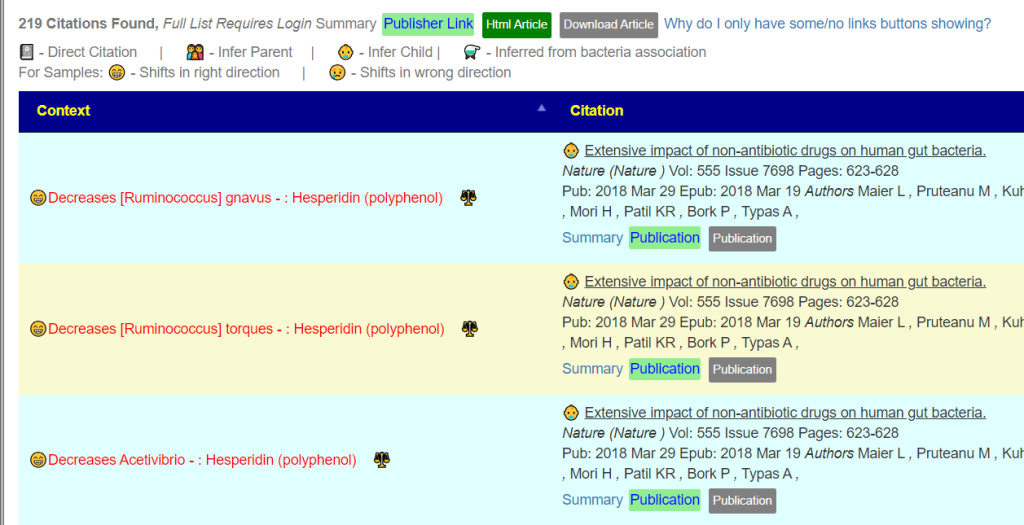See also Verify Before Buying – $$$ over Science is the norm
A reader messaged me because Hesperidin (polyphenol) was the top of his list and several friends. It was there also for me! It was up with antibiotics!

For all suggestions, there is the magic evidence button, 📚. Clicking it, I see 219 citations!! Priority is based on the number of citations.

The literature cites 74 different bacteria that it impacts. Since we infer a reduced impact to the parent and children, we end up with 2,300 bacteria influenced by it.
I double checked the database that were was not a typo and if it’s impact was not entered more than normal. It was not (I have checks in the database to prevent those typos, and they appeared to have work).
So WHY is it so common?
The reason is very simple, we have more information on what it impacts. We have 74 different bacteria. If we go to others, we see much fewer bacteria:
- Tulsi 17
- Olive Leaf 22
- magnolia bark 2
The priority is determined by how many bacteria it influences in a desired way x number of studies for each bacteria x number of each bacteria desired to be shifted. For example, if it takes just 100 to shift a bacteria to normal for Hesperidin, and a different bacteria needs 1000, the priority will be higher when they are more unless there are more studies showing the first bacteria is shifted (but not the second).
We use the term priority — and could use confidence, but confidence has too many different meanings in common speech.
Recent Comments